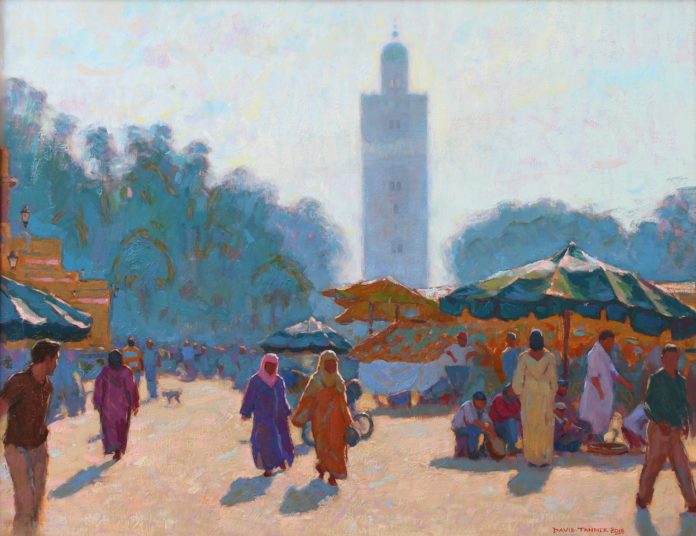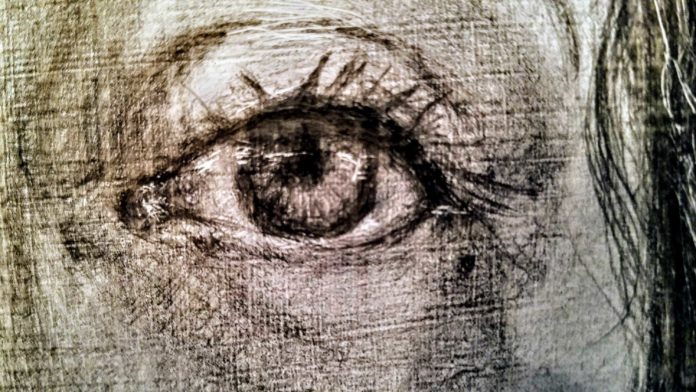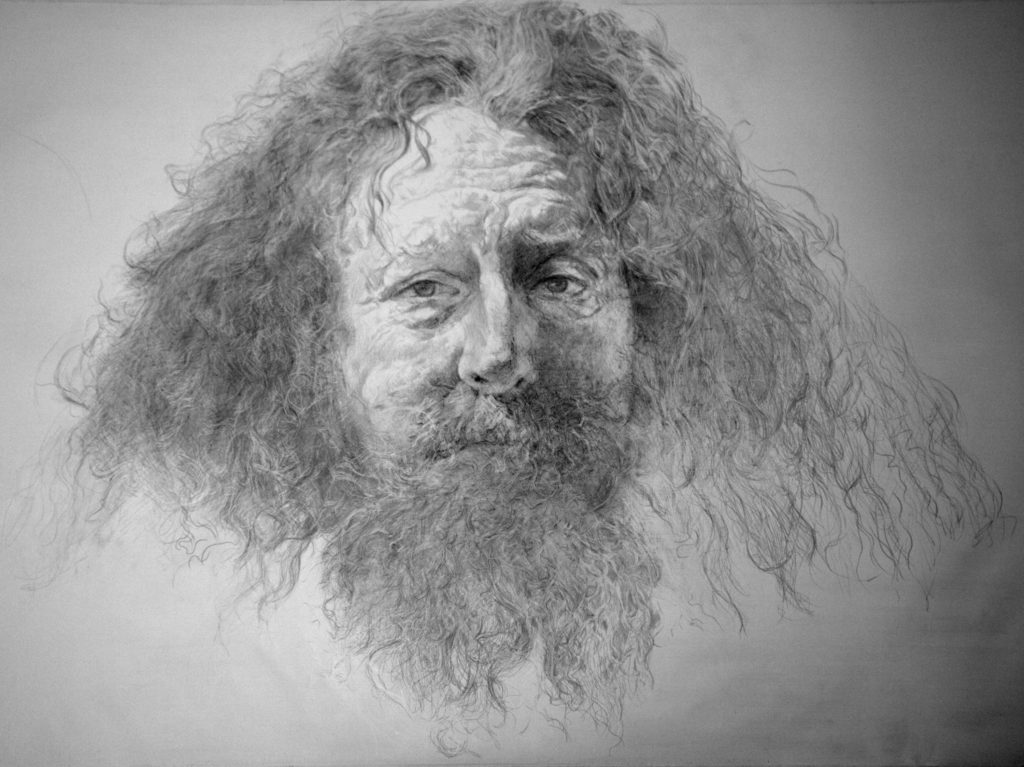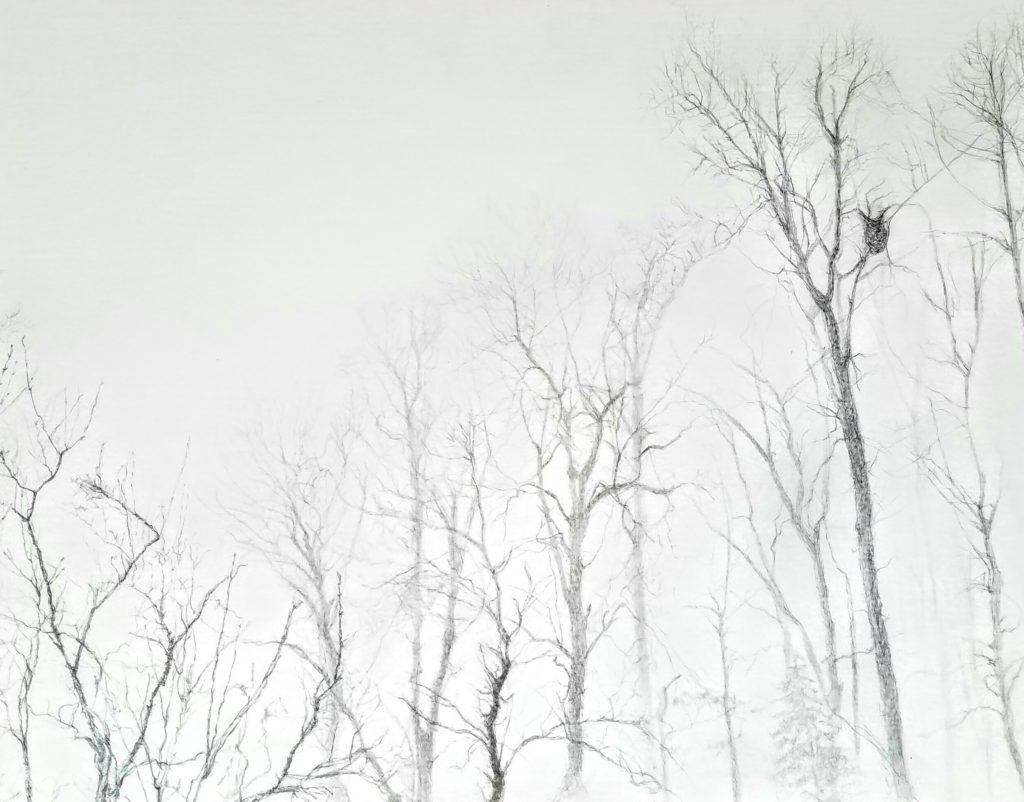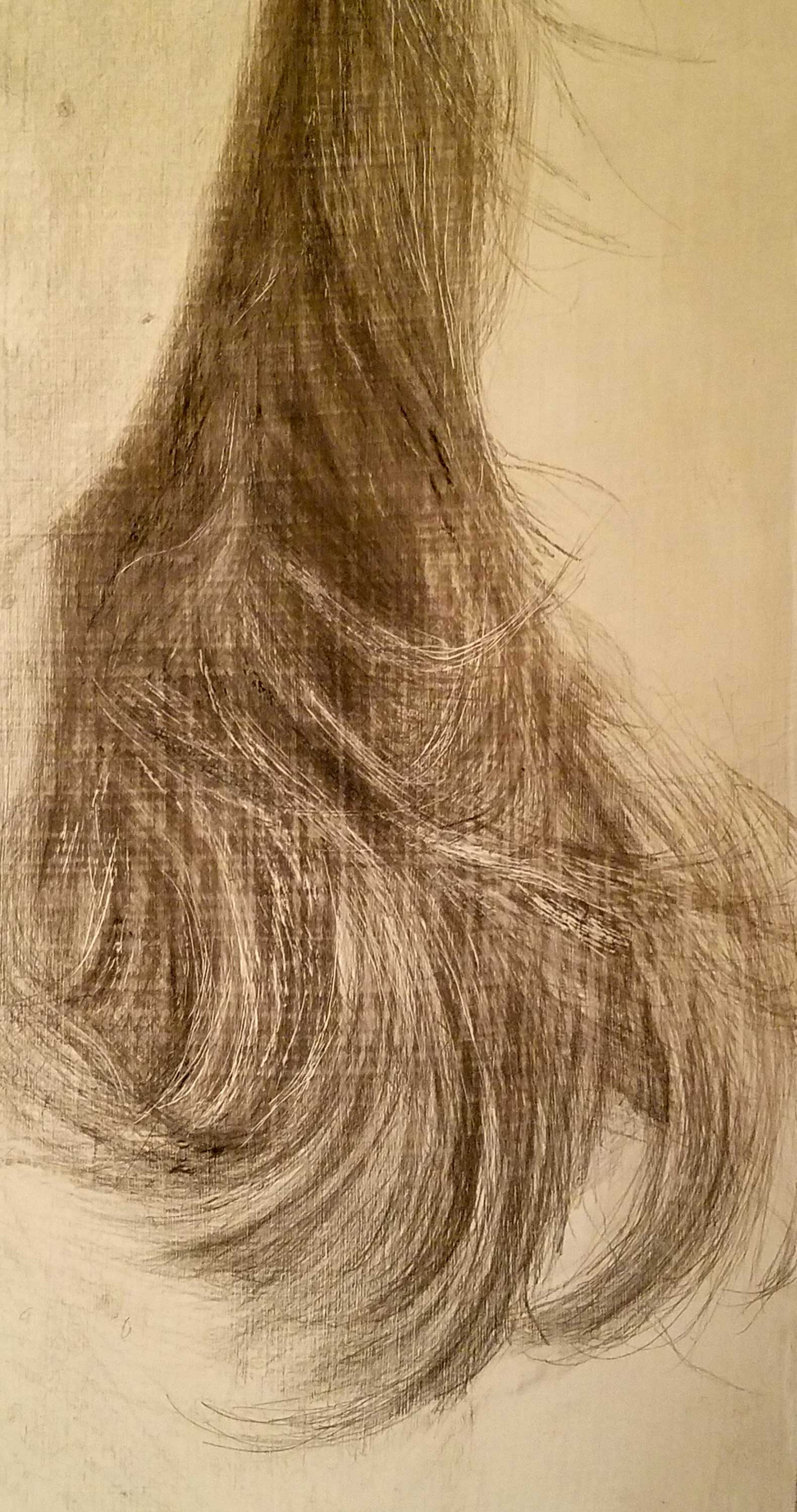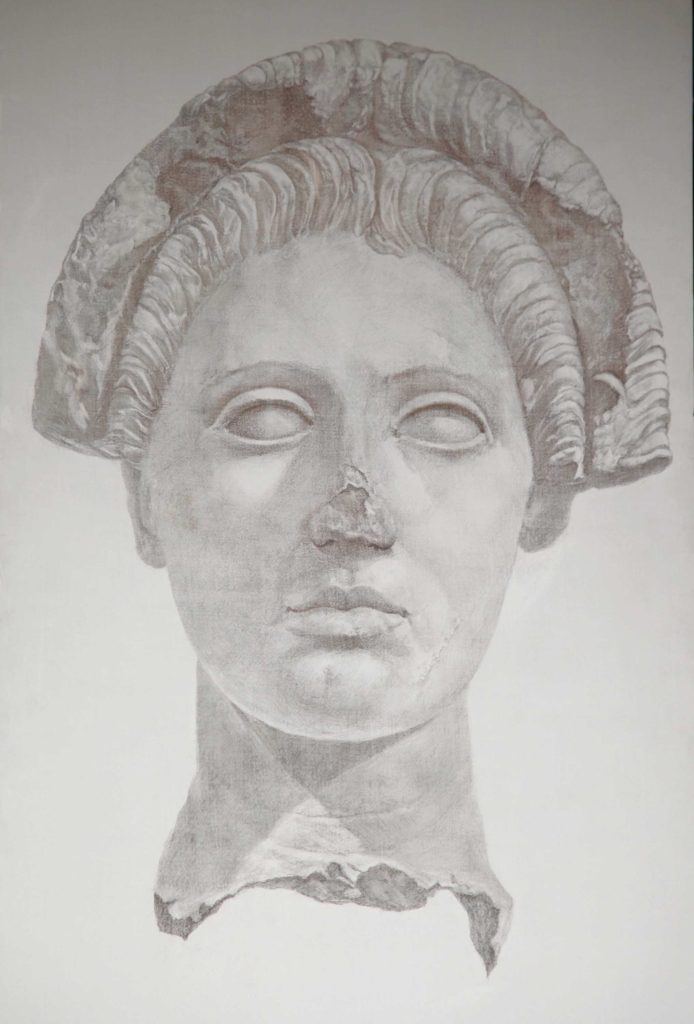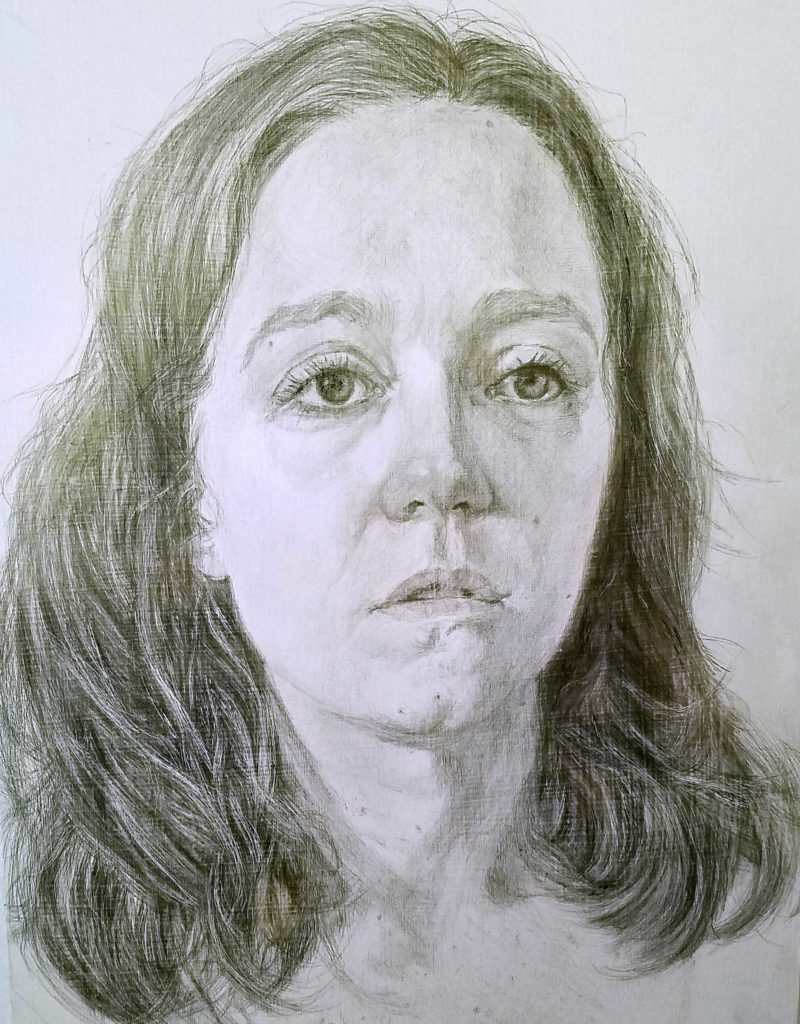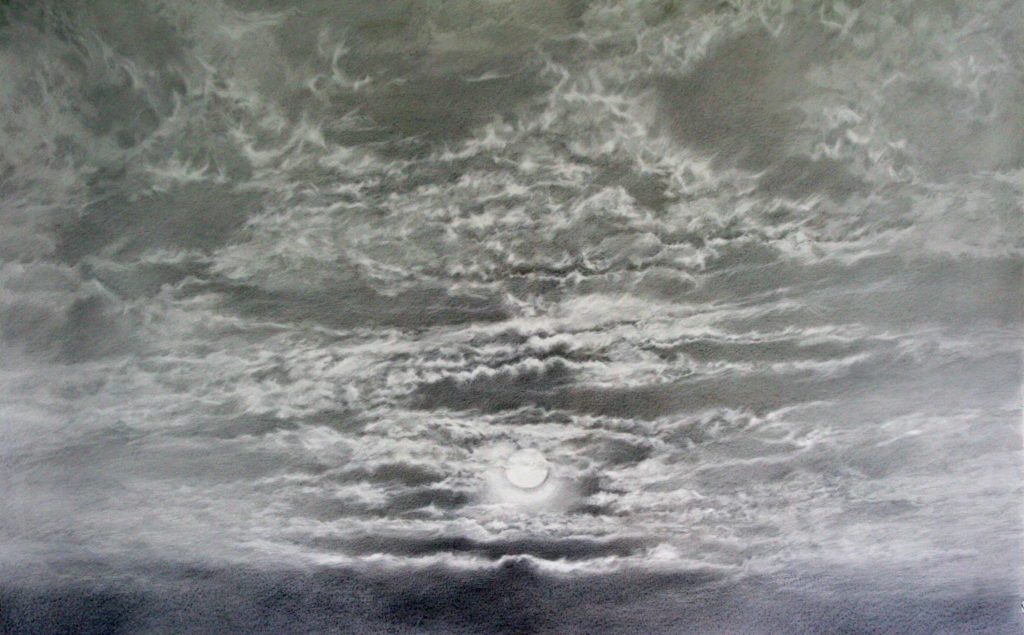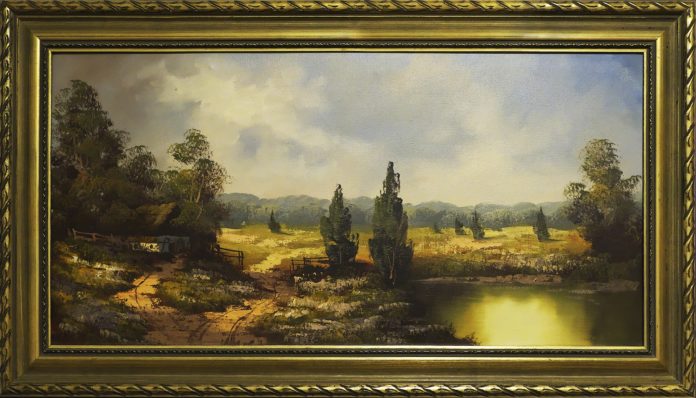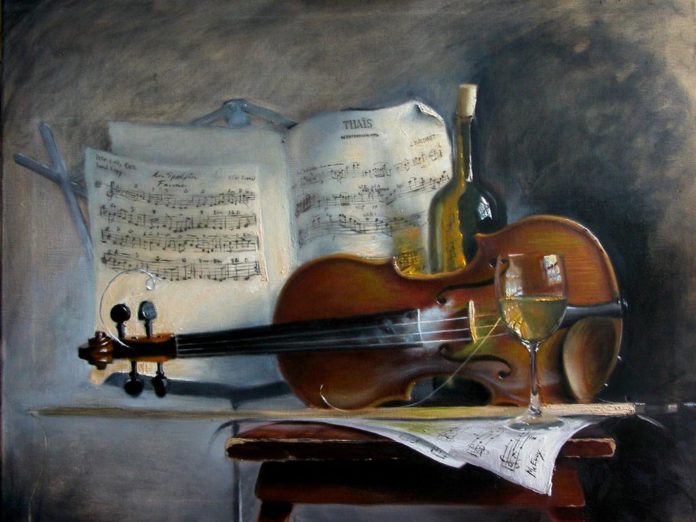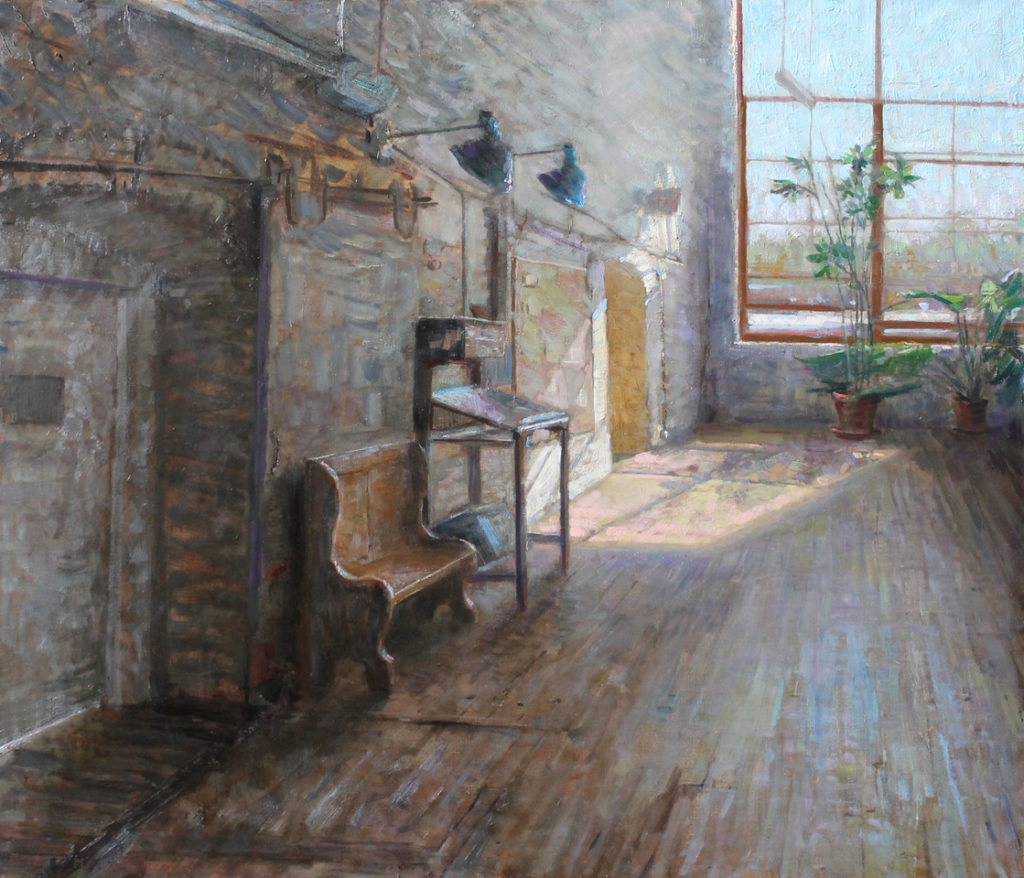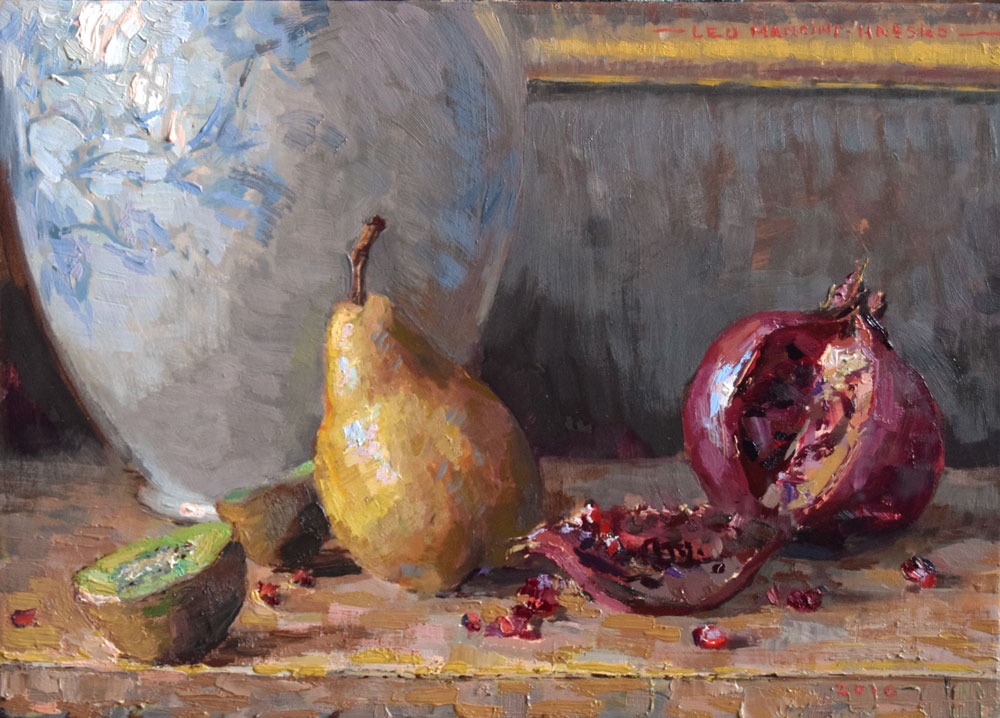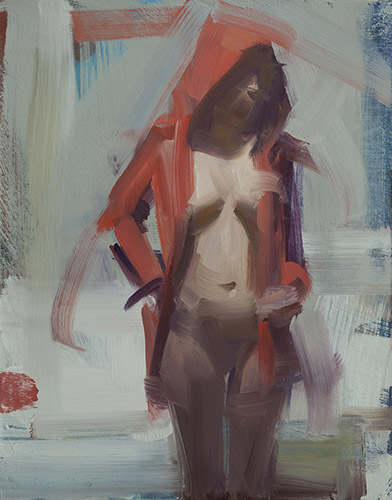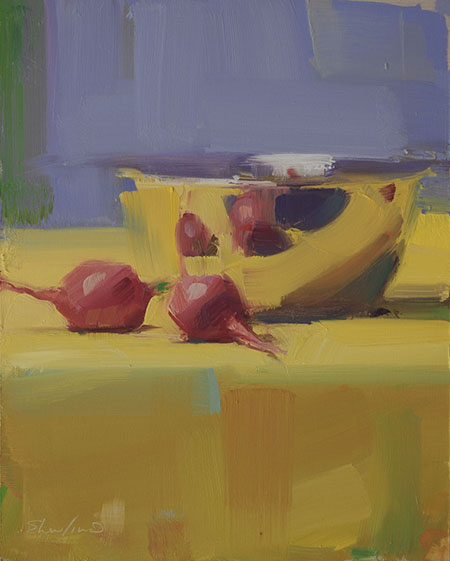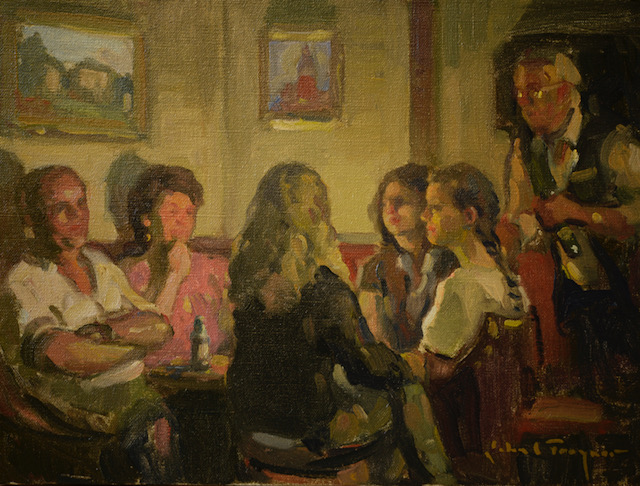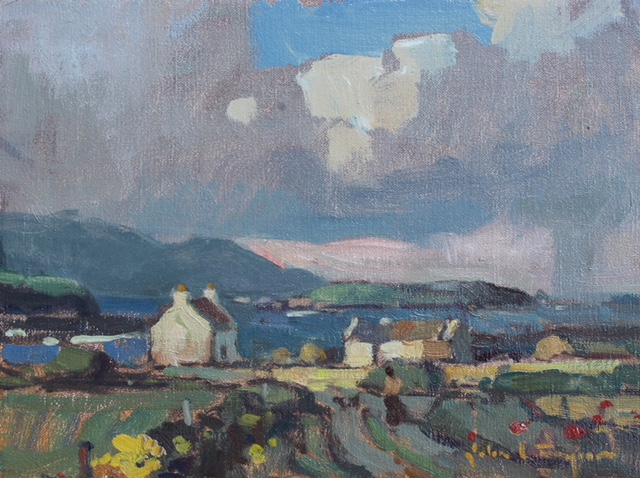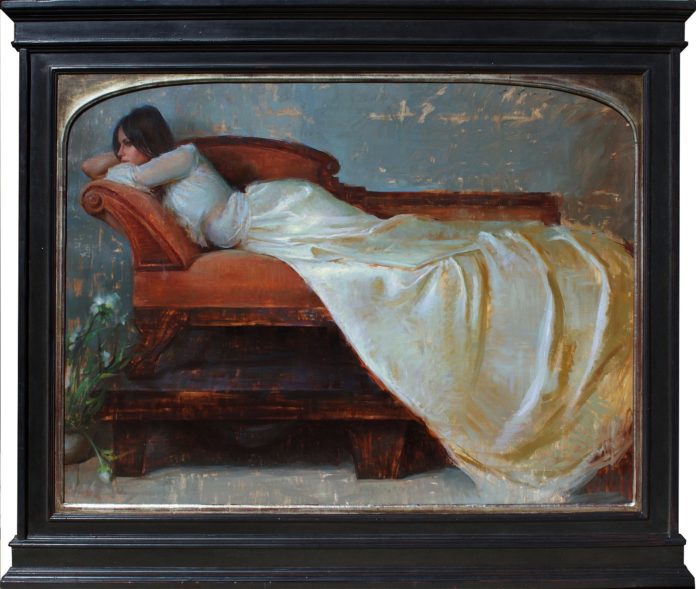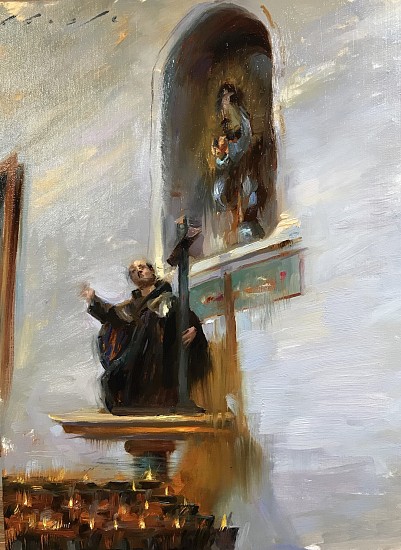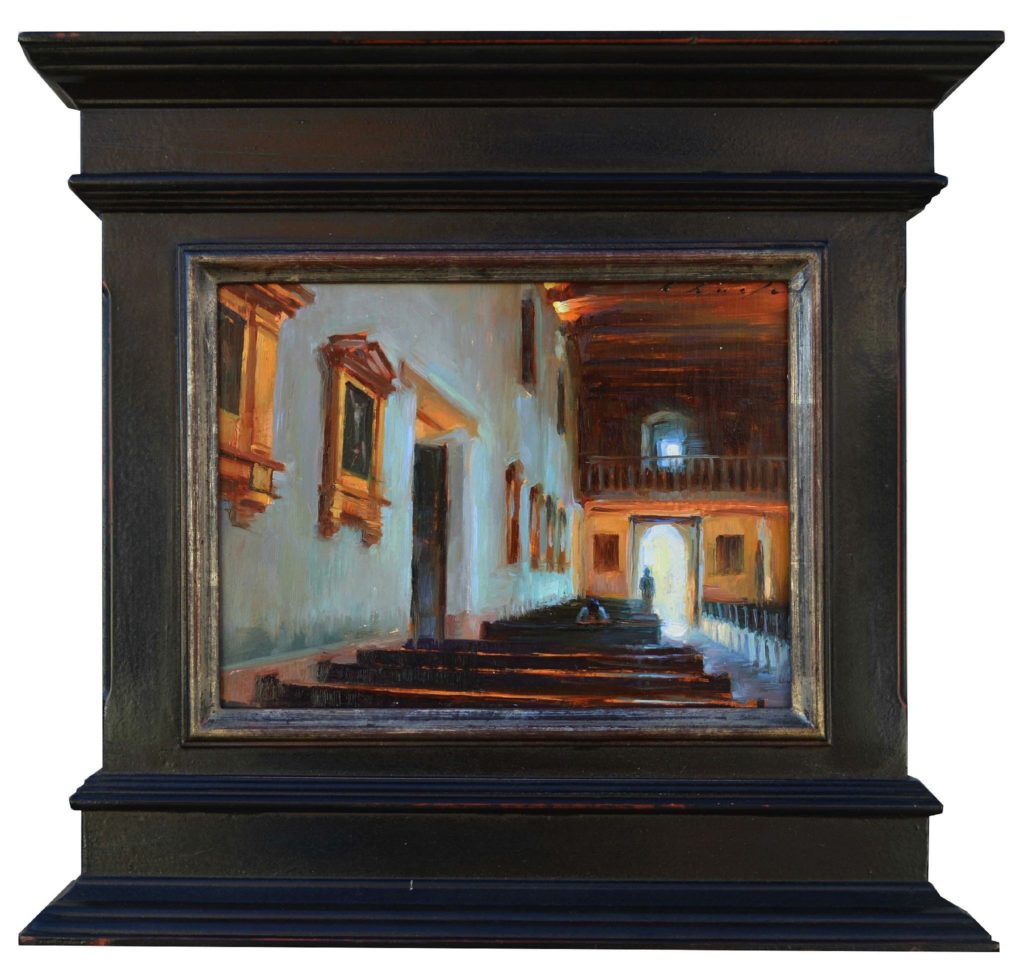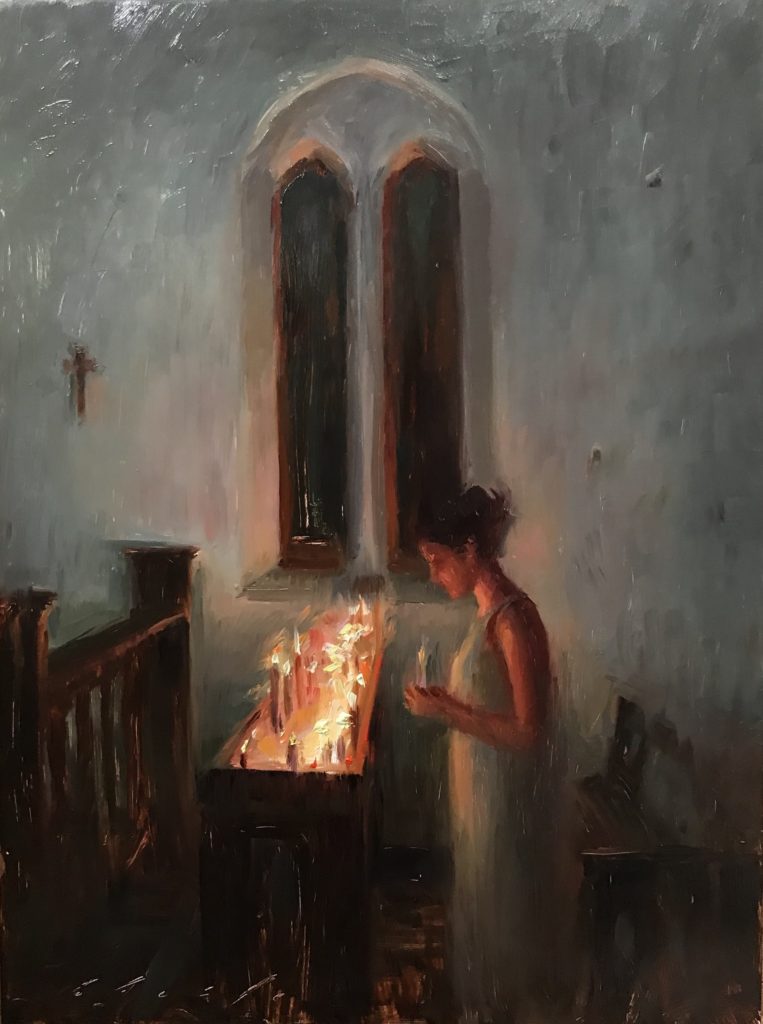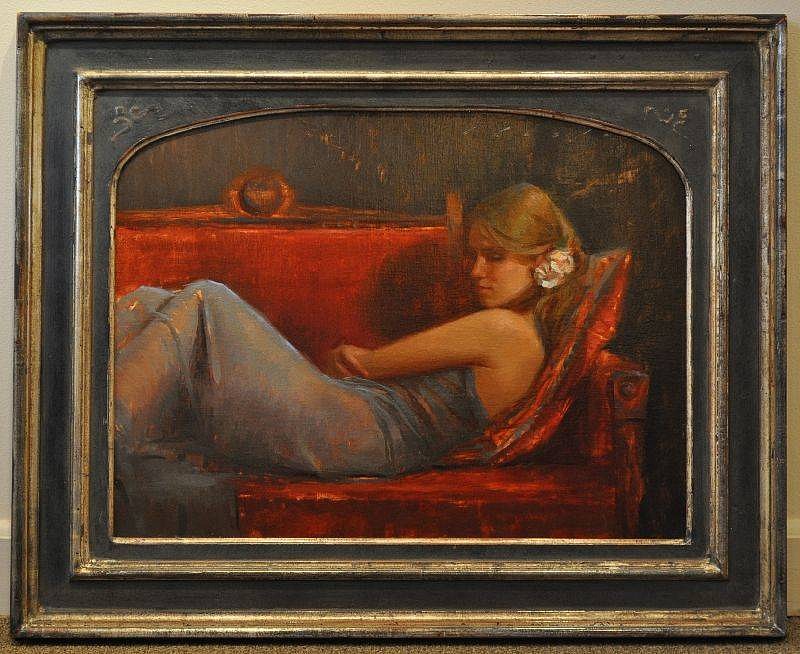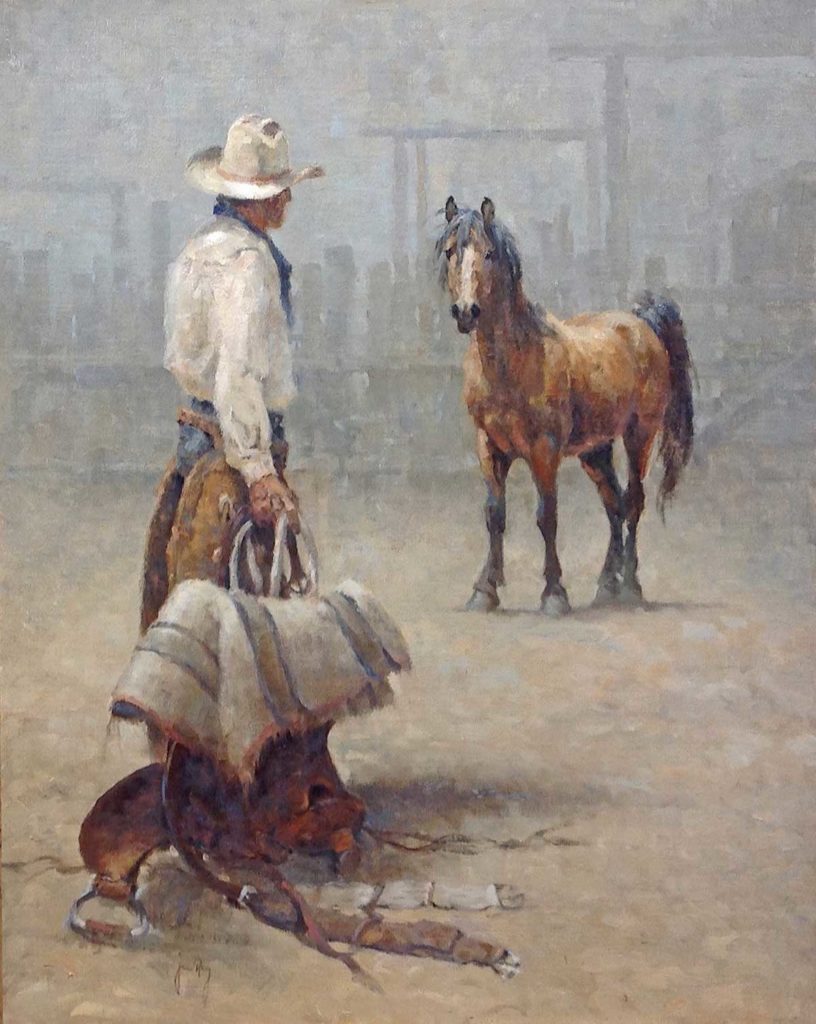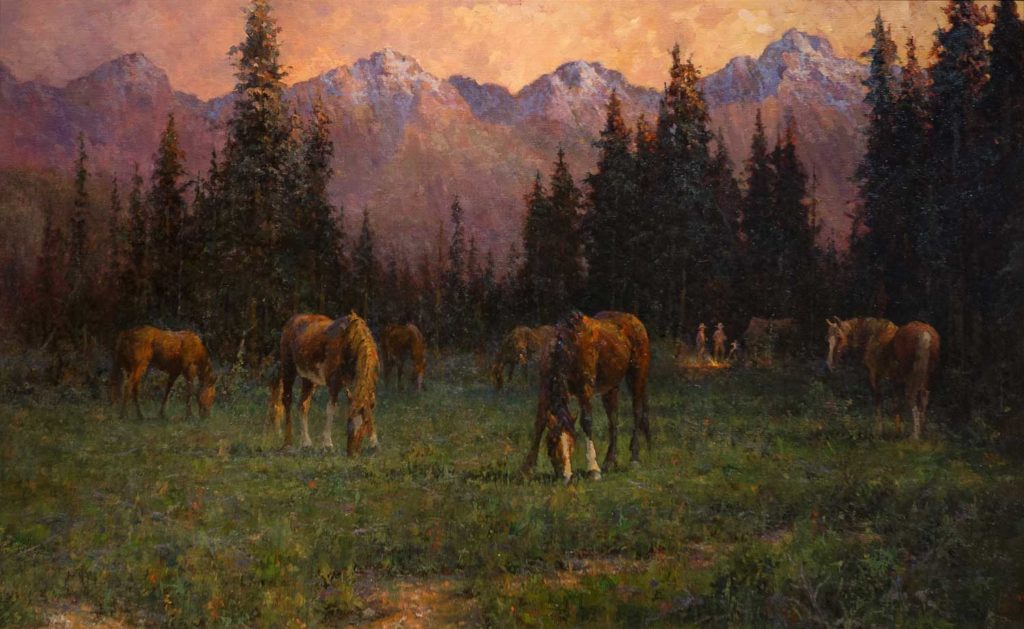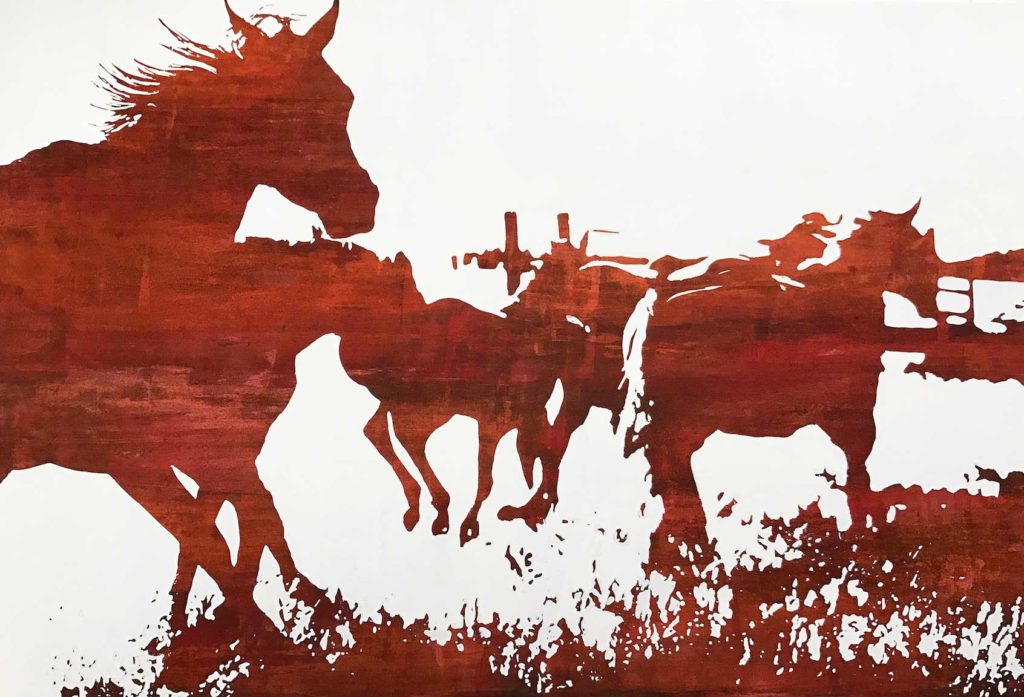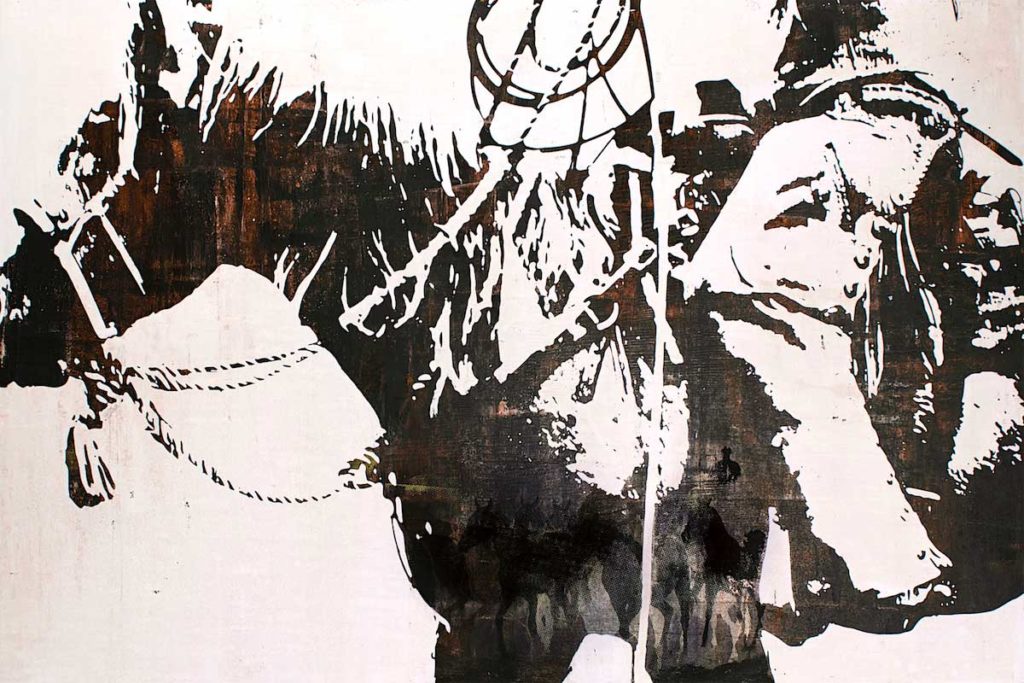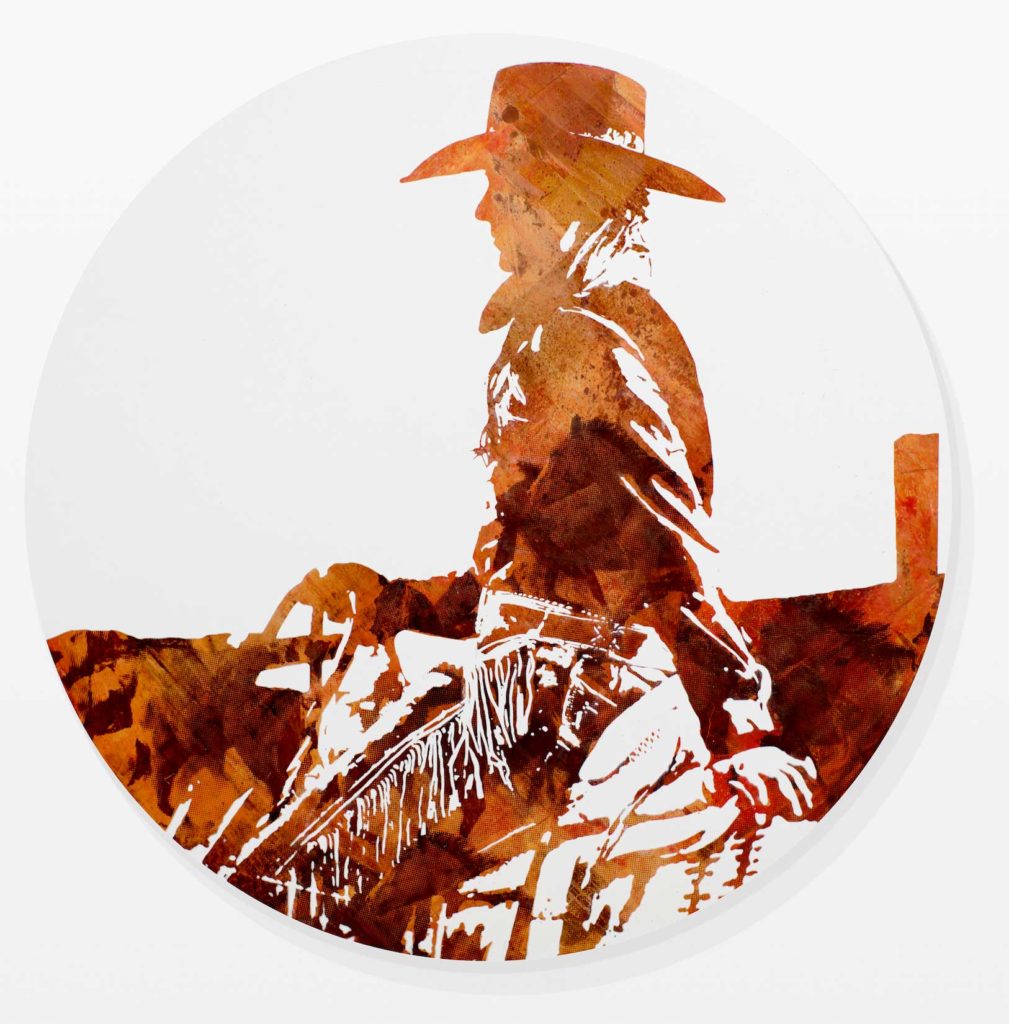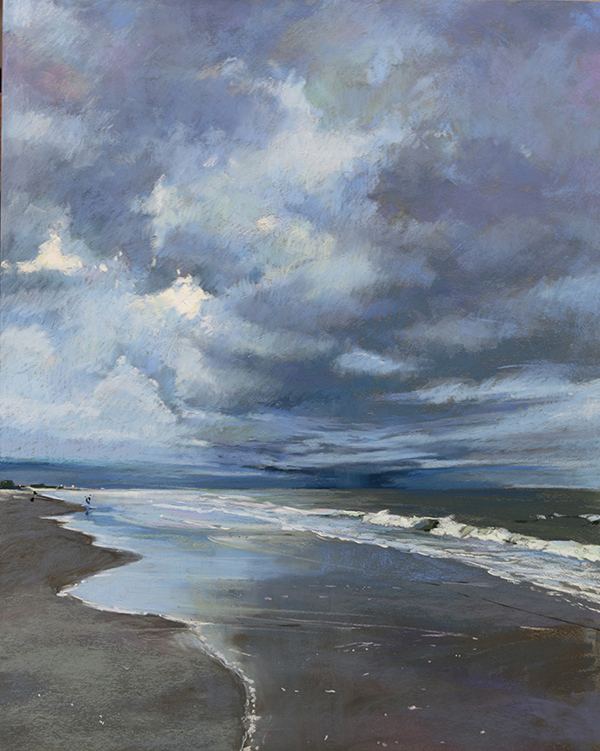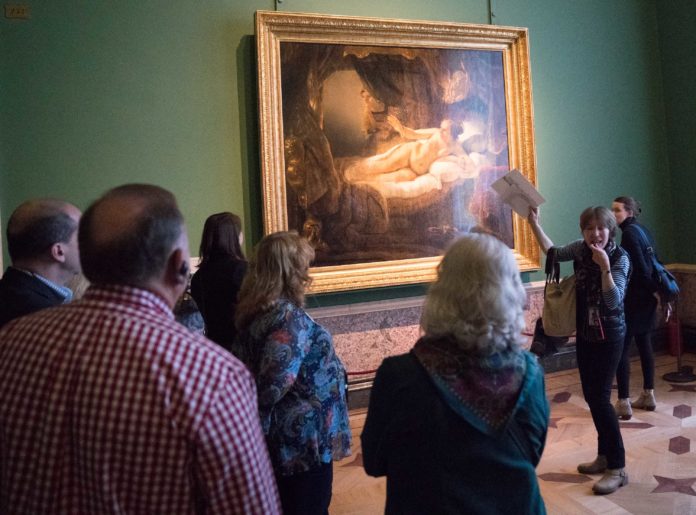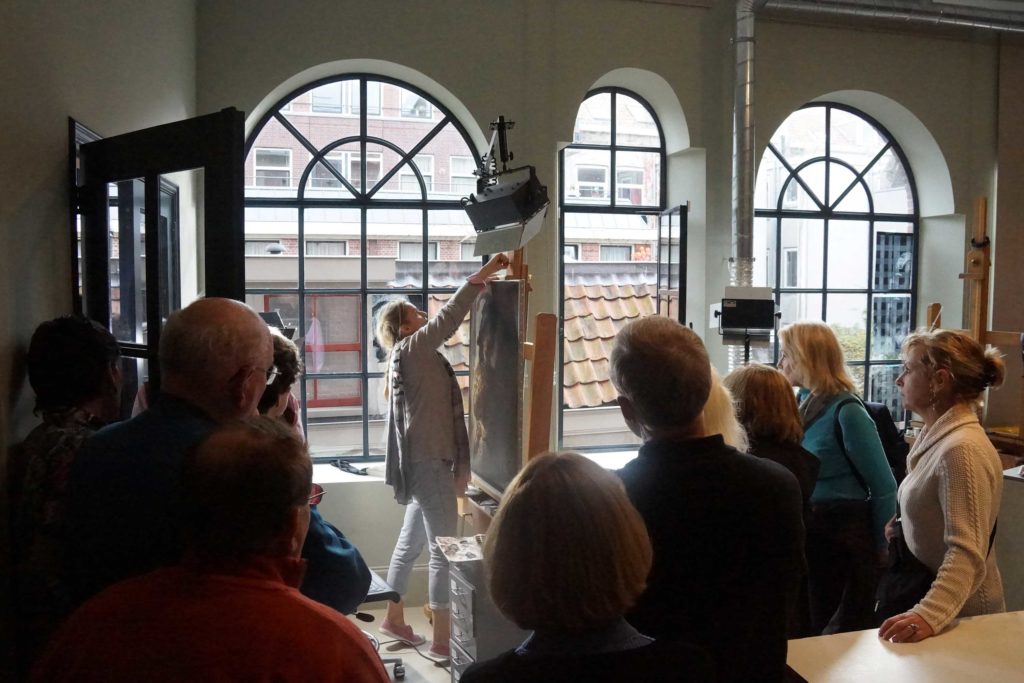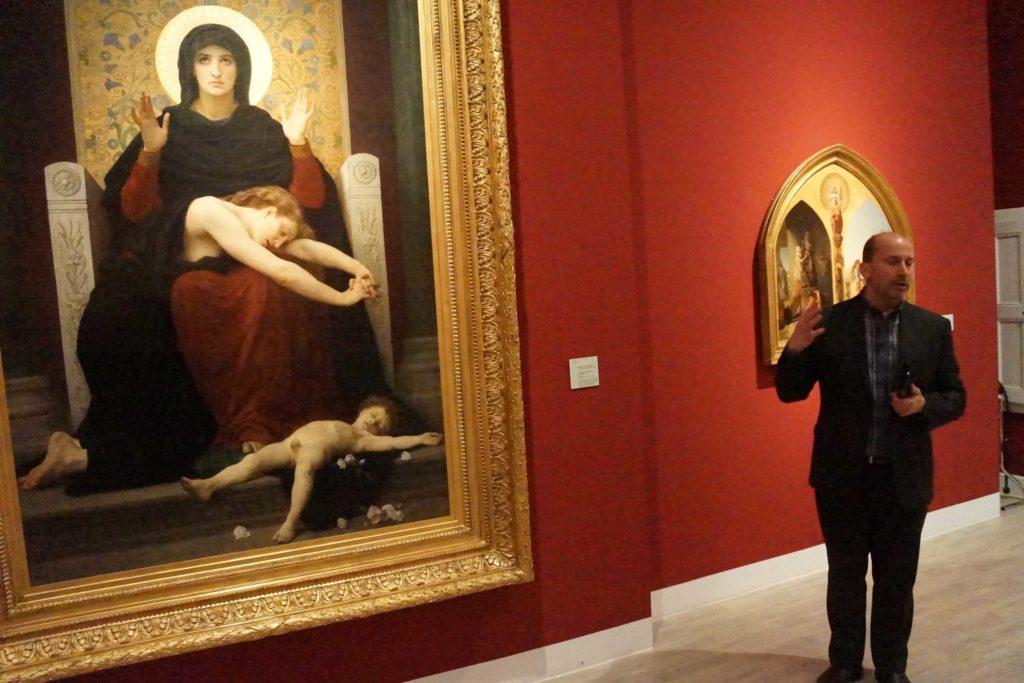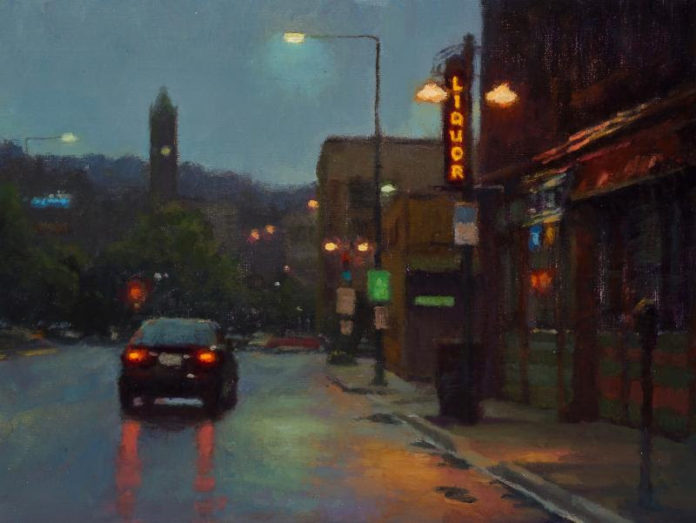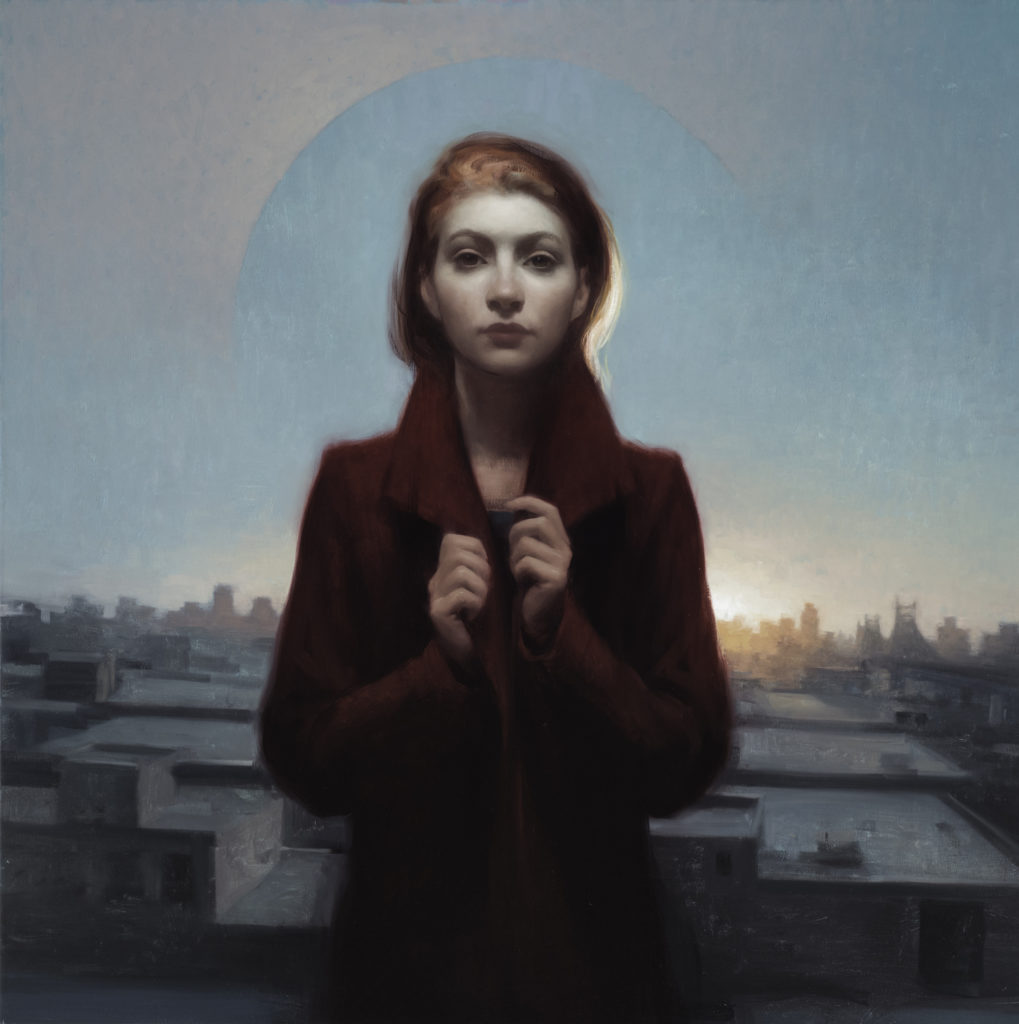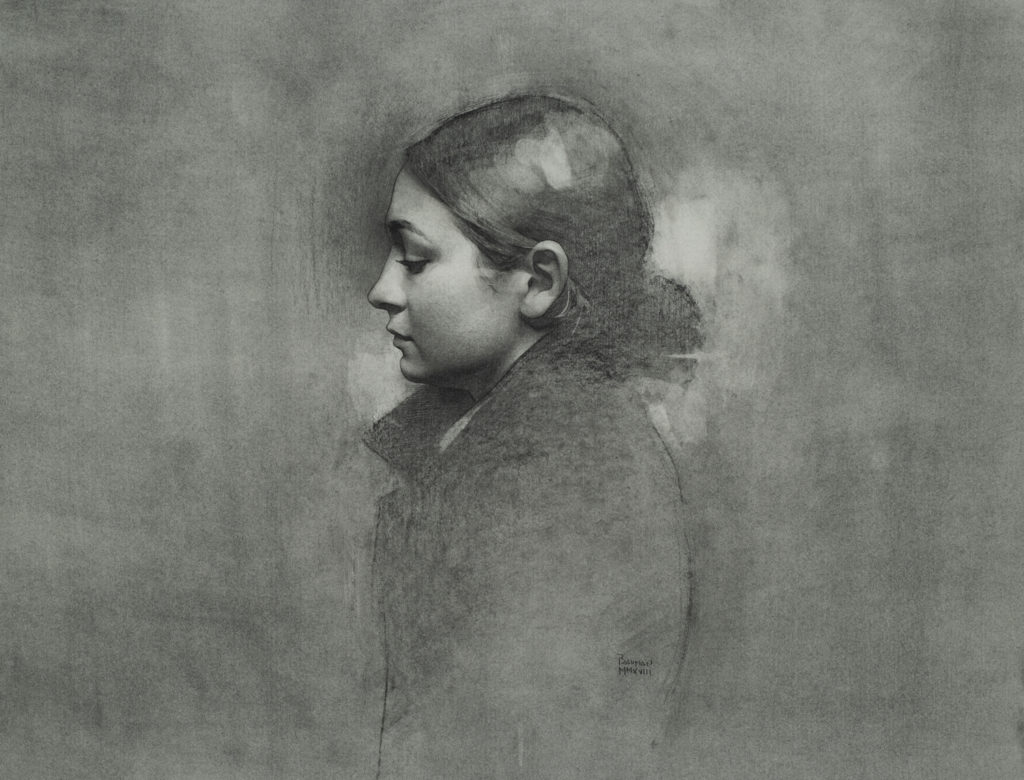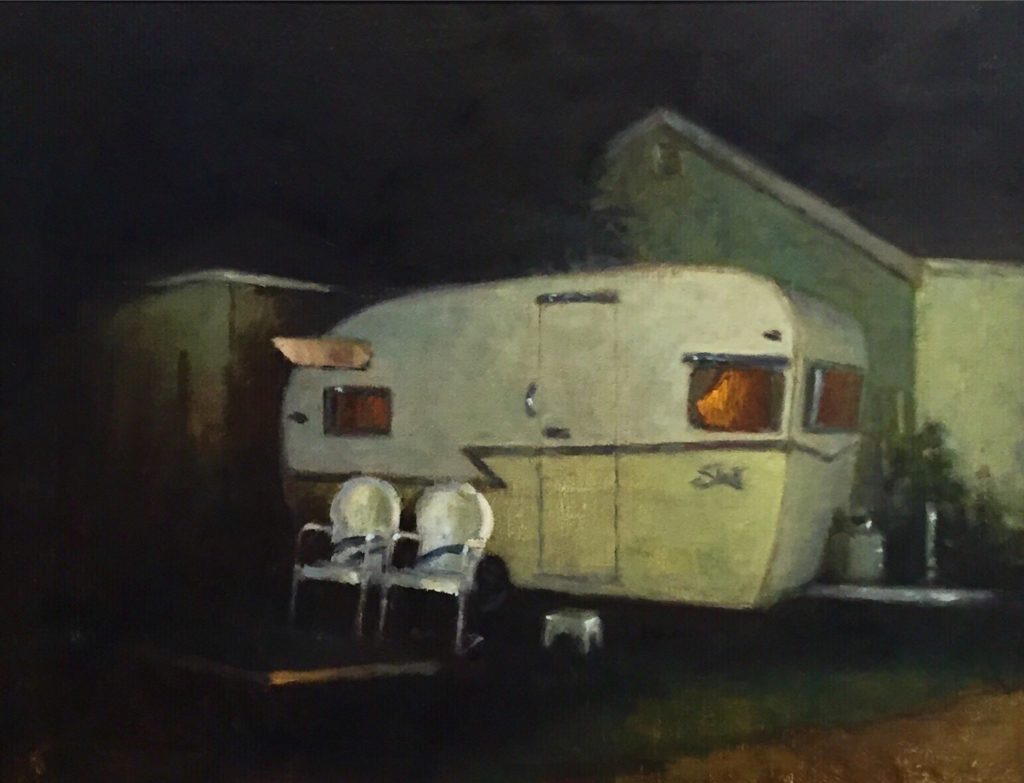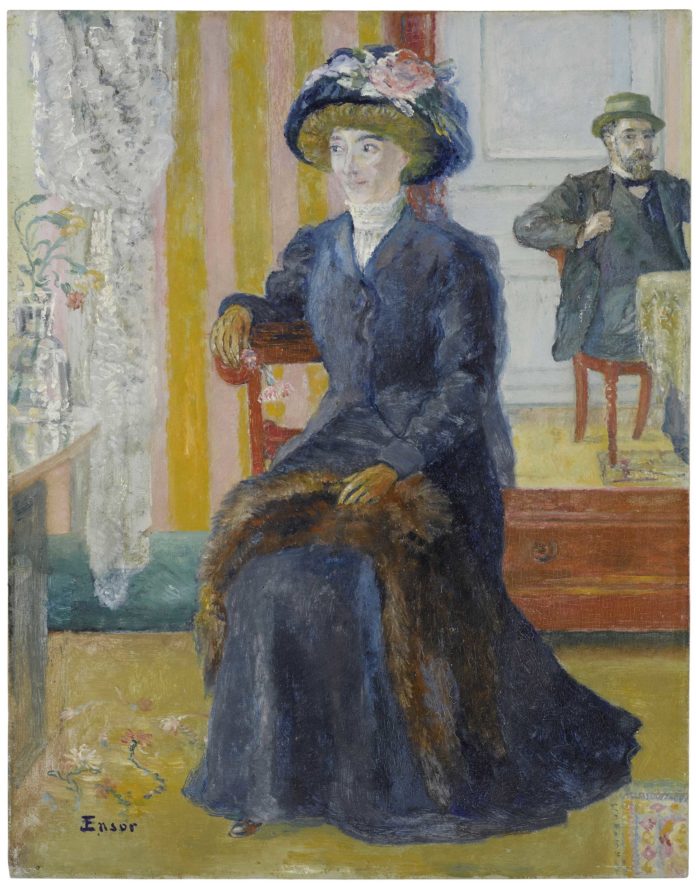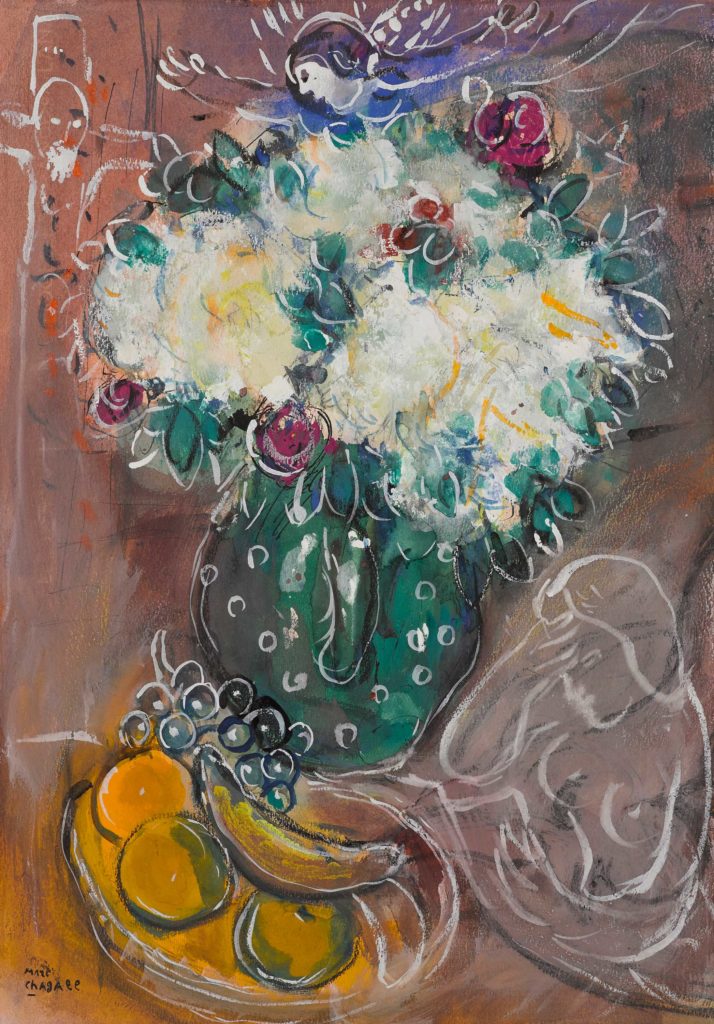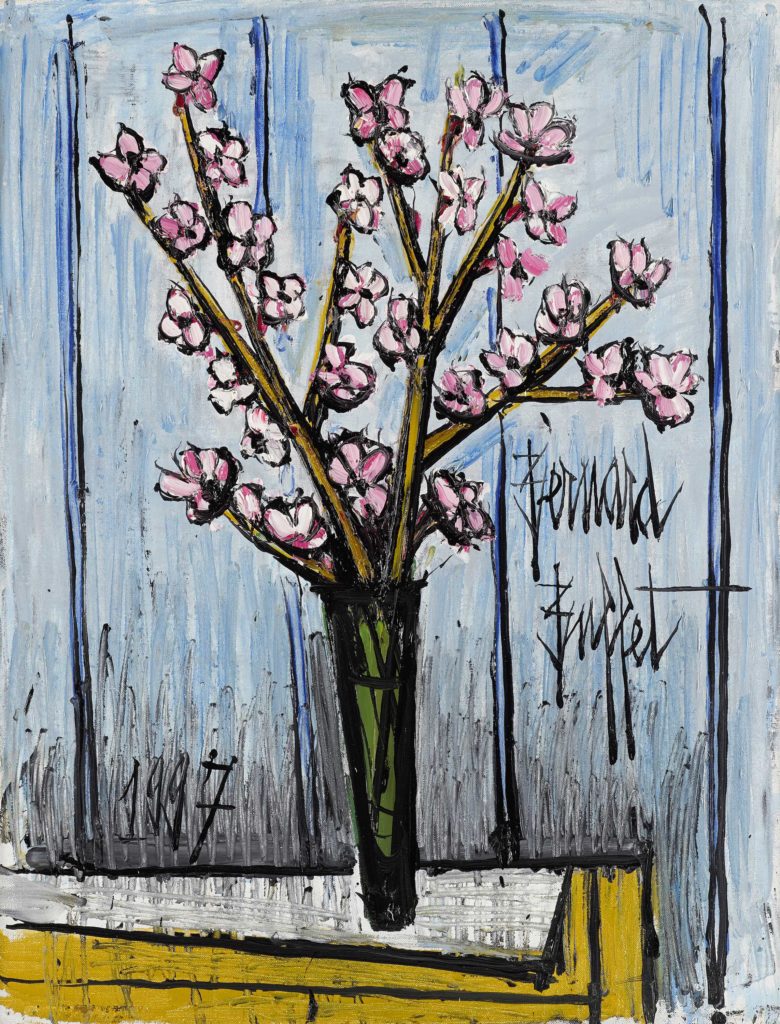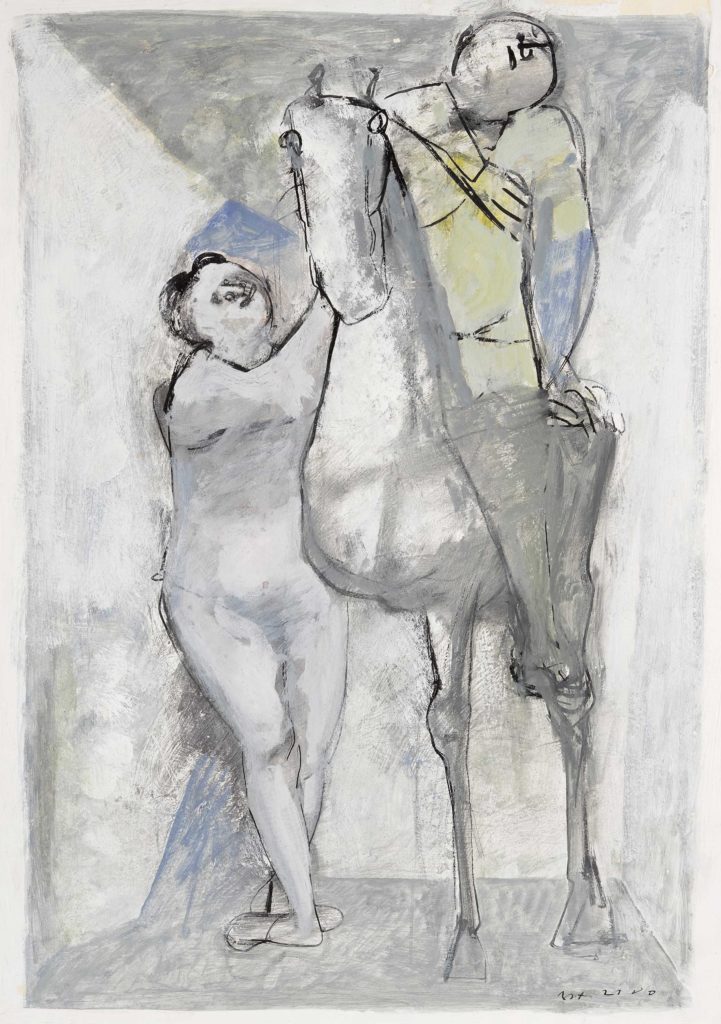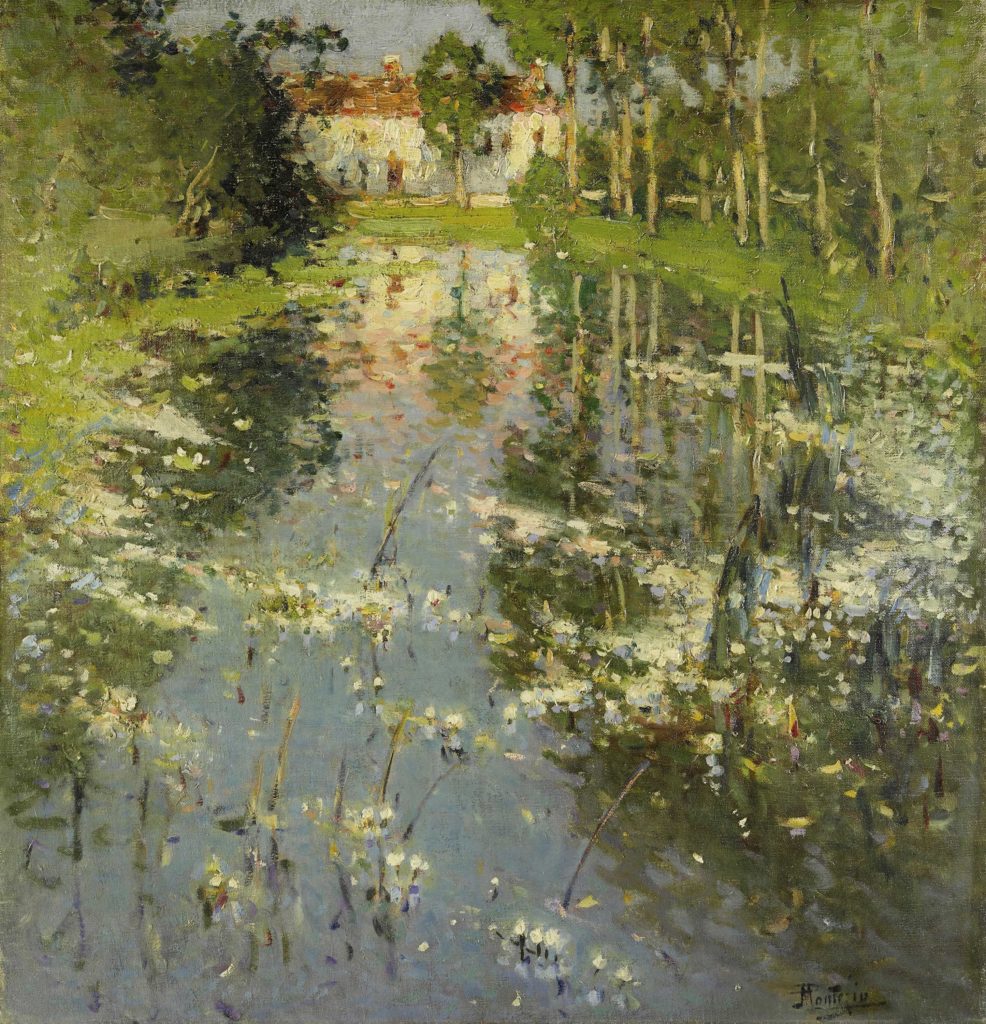When an upcoming exhibition of David Tanner’s work caught my eye, I reached out to him for a quick Q&A on this annual show of his recent works. Here, he takes us behind the scenes of his year-long project.
Cherie Dawn Haas: First, thank you for taking the time for this. Can you give us an overview of your show?
David Tanner: Each May I have a show of new work, all done in the previous 11 months. So all of the work in this current show started coming to fruition last June. Having a show each year keeps me accountable. It gives me enforced deadlines to plan projects and get things finished on time. I tend to work on several things at once.
Paintings that require a lot of planning and pre-design, like my narrative figure compositions, I may work on for several days, or weeks even. I then put them away for a while to see them with fresh eyes before finishing.
Each year I generally end up with about 22 paintings to display that I feel are strong and presentable. My anchor pieces are usually narrative figure paintings that take a great deal of planning, and often dozens of hours of painting time.
On the other hand, many of the pieces that are included in my shows are non-commissioned alla prima portrait sketches, simple head studies usually painted in a single session with a model.
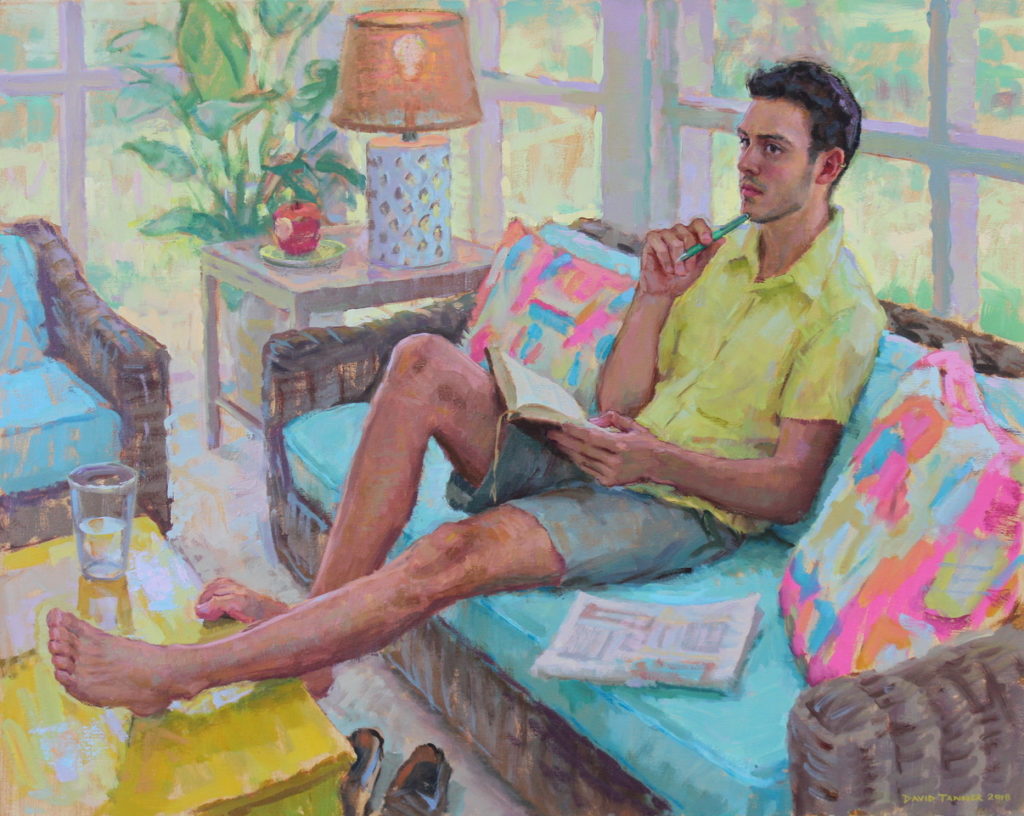
CDH: What’s the most common question (and your answer) that you hear about your work?
DT: I’m often asked about the genesis of my narrative figure paintings. It begins with choosing a model to fit the type of character I envision for the painting. As an example, the contemplative young man I chose for “Waiting for the Light to Go On” was perfect for portraying a character in the midst of writing. An 8 x 10 sketch was painted on location, and then referred to in my studio (along with photo references) to create the 24 x 30 inch painting.
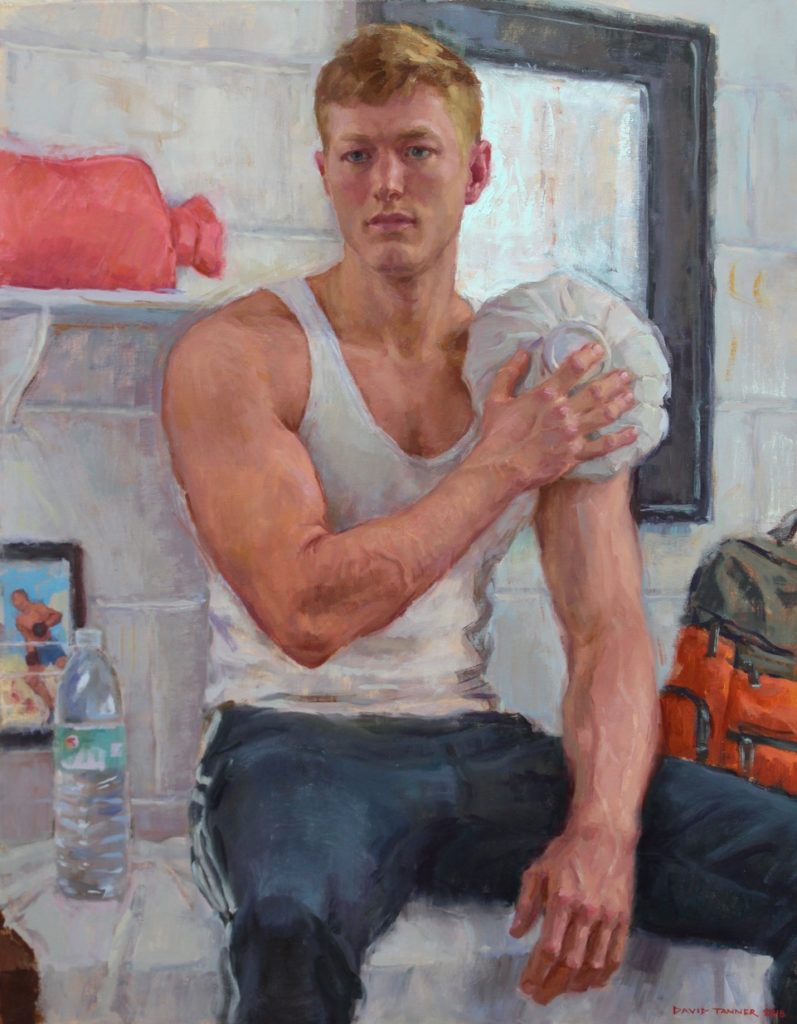
The same type for thinking was used in choosing a model to bring to life the concept of an athlete nursing an injury, an idea that evolved into the painting “After the Match.” Once I have the right model to “play” the character, we try different gestures, clothing, lighting, etc. until I begin to see something interesting.
CDH: What do you love about oil, and why is this your chosen medium?
DT: I love oil painting. It’s such a forgiving medium. I try to take advantage of the paint while it’s wet so I can push color masses into each other and find what feels like the correct borders, as opposed to creating lines and filling them in with color. The feeling of pushing those colors around and being able to manipulate them is just heaven to me.
CDH: Please tell us a little about Morocco. Did you actually visit? What was it like?
DT: My partner and I travel as much as possible, and spent ten days in Morocco in 2009. We visited Tangier and Marrakech. The narrow streets and crowded markets were beehives of activity, and of course visually compelling for a painter.
“Morocco: The Marketplace in Marrakech” [shown at top] was based upon paintings I did on location back in 2009, as well as photo references taken on the trip. The square is called Jemaa el-Fna. The smoke hanging over the square (from the grilled meat stalls) lent an enigmatic quality to the Koutoubia Mosque, looming over the scene.
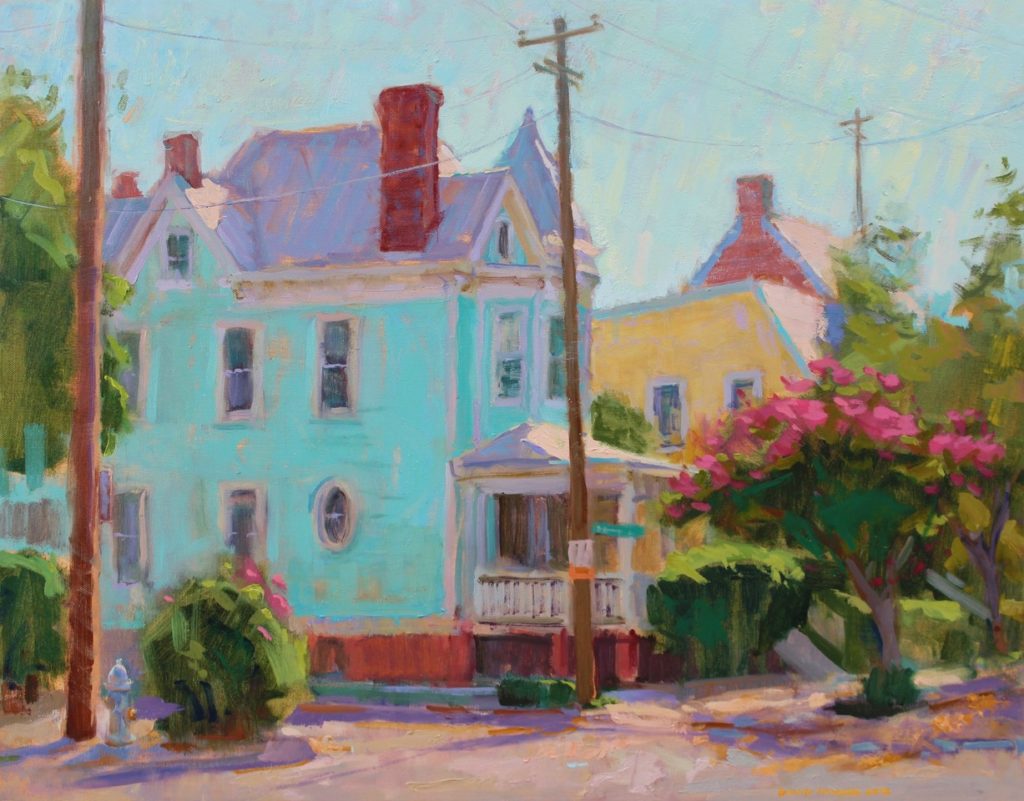
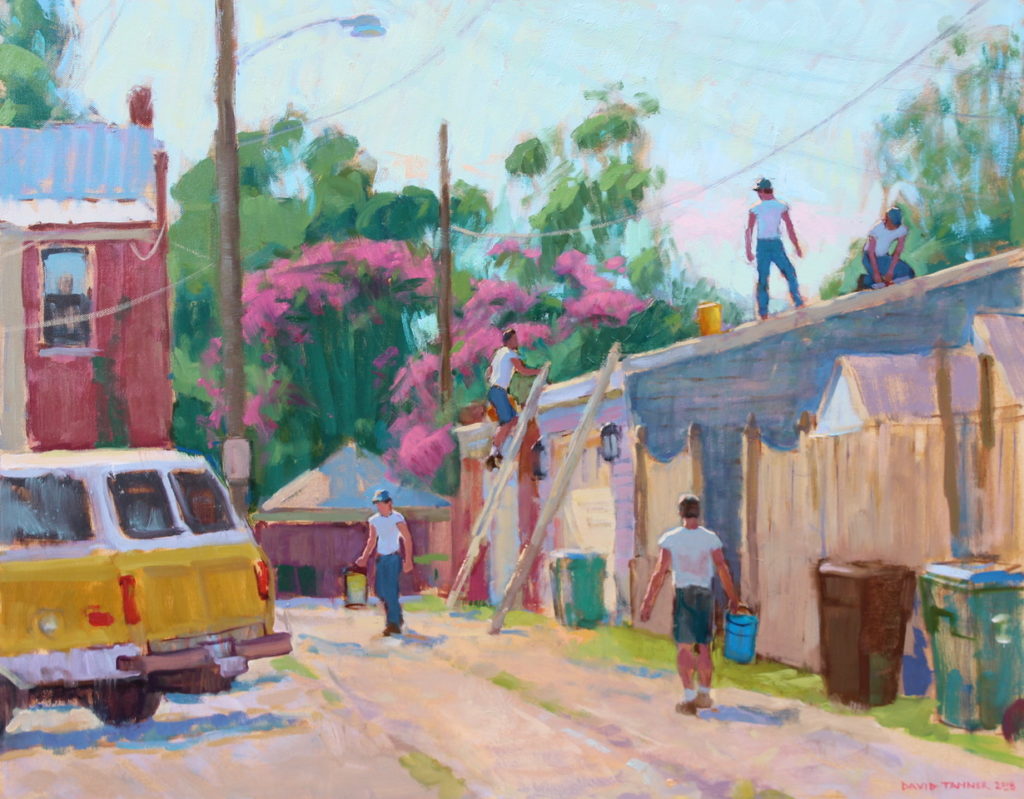
***
“David Tanner: Recent Oil Paintings” runs through July 7, 2018, at the Crossroads Art Center (The Caboose Gallery) in Richmond, Virginia. For more information, please visit davidtannerfineart.com.
Sign up to receive Fine Art Today, the weekly e-newsletter from
Fine Art Connoisseur magazine.

